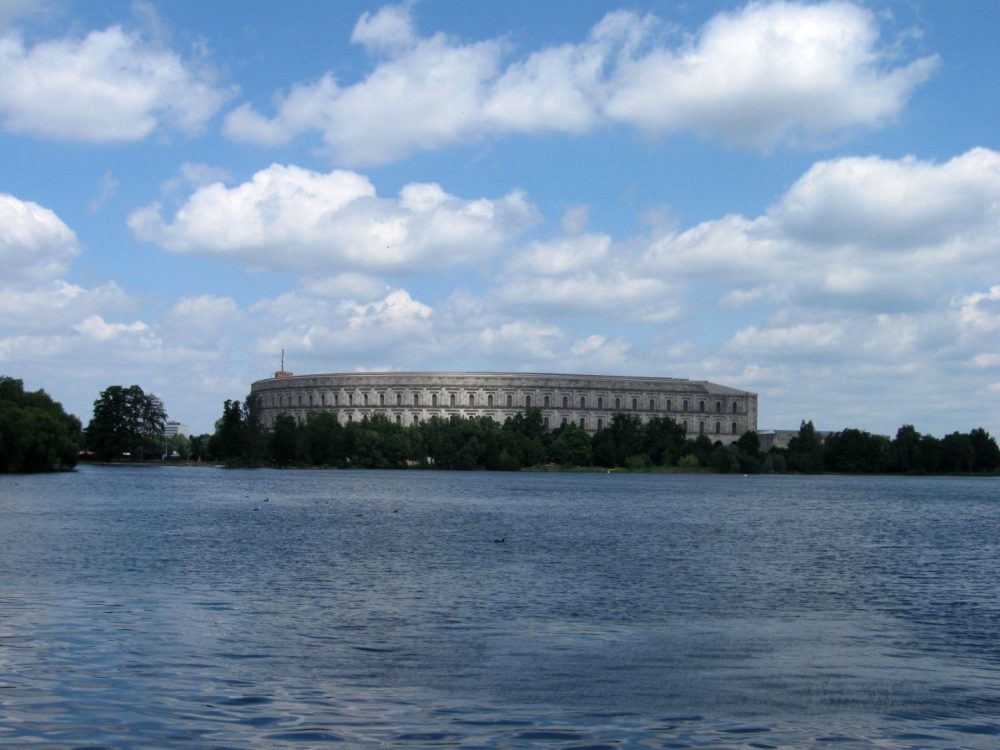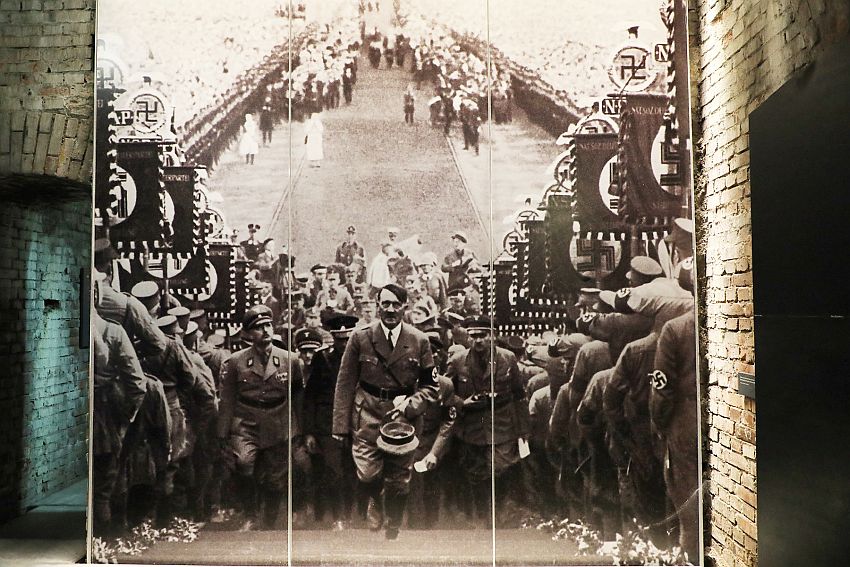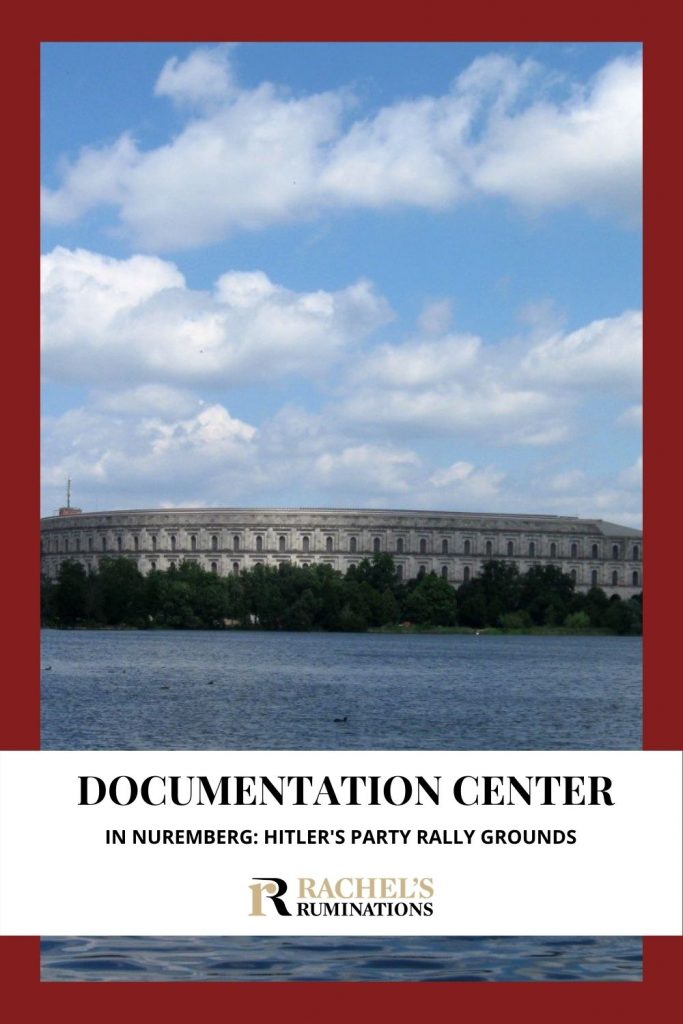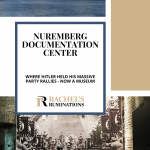Nuremberg Documentation Center
Note: This is a guest post by LeAnna Brown.
There are so many things to do in Nuremberg, whether it be visiting the famous Christkind Weihnachtsmarkt, or just walking the Altstadt, which is why it is one of our favorite day trips from Munich. There are also some great day trips you can take from Nuremburg. However, one of the things that many may skip over on a quick, one-day pass-through is one of the best museums on World War II that I have personally ever been to: Nuremberg Documentation Center (And as someone who lives in Germany, believe me, I have been to my fair share of Holocaust and WWII museums!).
This is why, if you really want to experience the city to its fullest, I highly recommend doing Nuremberg in two days and allowing for a full day at the Documentation Center Nuremberg.

Disclosure: This article contains affiliate links. If you click on one and make a purchase, I (Rachel) will receive a small commission. This will not affect your price.
The history of the Nazi Rally Grounds
Starting in 1927, Hitler decided that Nuremberg was to be the center of the Third Reich. He had many reasons for this, such as its historical connection to the Holy Roman Empire. Nuremberg was also once the site of the “Reichstag” and he wanted to get back to “the roots.” The city was also well-located in the country for conventions. Therefore, Nuremberg was chosen as the “City of Nazi Party Rallies.”
If you have seen any old war-time footage of massive rallies, parades with Nazis, and Hitler giving terrifying speeches, then most likely they come from this exact location.
Hitler became obsessive about making an enormous center for his Nazi party that would both impress and intimidate. There were immense plans for architecture, but very little of the original plan was actually constructed or completed.
And while so much of Germany was damaged and bombed by the Allies at the end of the war, what had been built here somehow escaped the destruction and was left untouched for years.
Today, the building that was originally intended to be the Great Congress Hall Nuremberg – never completed – houses the immaculately well-done museum.
If you’re going to stay in Nuremberg as LeAnna recommends, book your accommodations here.
The Nuremberg Documentation Center today
I have lived in Germany for years and have been to places like Dachau concentration camp and the Memorial To the Murdered Jews of Europe in Berlin, among other WWII memorials or sites. And yet, I would still often find myself questioning just how a man like Hitler, with such blatant and outward hatred and racism, could convince an entire country that his ideals aligned with the people’s. How could an entire country become so enchanted with this ideology and man?
This particular museum does a tremendous job at explaining just that. It was a perfect storm of years of frustration within the country, an economic depression, hundreds of years of systemic racism towards Jewish people, and everyone feeling like they needed a scapegoat. Combine that with a charismatic leader promising success, food on the table for many starving families at the time, and a redemption for the embarrassment of losing World War I, and you’ve got the perfect recipe for floundering souls to grab onto.
The museum details the ins and outs of the SS and Gestapo, Hitler’s intricate plans for the Nazi Rally Grounds, and the rise of his power over time. It also segues into the Holocaust itself, where it does not shy away from the atrocities that occurred (both on the Nazi side of the war as well as those persecuted and murdered).
It is an emotional, sobering, yet factual account of the war that is shown from different perspectives than most other museums on the topic.

The Nuremberg Trials
And while all of the above is necessary for people to experience today, perhaps one of the most famous things about this museum’s location is the Nuremberg Trials, which took place here. These trials were unique military tribunal hearings that started the process of trying and convicting many of the key players in the Nazi regime.
It was these trials that sparked a need for the International Criminal Courts to be created, still in use today.
Walking the Nazi Rally Grounds
Outside of the museum, your time grappling with the past is not yet over. While the majority of Hitler’s grand plans never actually came to fruition, you can still walk the grounds today.
It is an incredibly odd feeling walking around the Zeppelinfeld (Zeppelin Field) today. You’ll pass joggers, and if it is springtime, you might even encounter the giant “Nuremberg Fruhlingsfest” which is their local Volksfest.
On one hand, you wonder how and why this was ever allowed to stay open, and even more so, how it is acceptable to allow this to be a “tourist attraction.” And yet, there is so much power in not just bulldozing over atrocious memories of the past. Walking these grounds allows for the magnitude and darkness of what the Nazis believed to really seep in. It reminds us that this is not ok, and how silence and not standing up for marginalized groups can lead to such acts of horror and violence.
While it is actually quite easy to imagine Hitler still standing on this grandstand, since it is this exact image that has been ingrained in our minds from old films and photos, today you won’t find anyone celebrating that monster here.
In fact, anything seen as remotely supportive of the Nazis will land you in jail and with hefty fines.
No matter how difficult it is for tourists to spend a day on vacation going to such a humbling site, it is locations exactly like this that are so important to dive into, remember, and learn from.
Getting to the Documentation Center Nuremberg
While most of Nuremberg’s main sites are in the Old Town, it is incredibly easy to get to the Nuremberg Documentation Center via public transportation. Both ways take about 15-20 minutes to get from the train station to the grounds.
From the main train station (Hauptbahnhof):
- Take the Number 8 Train 9 stops.
- Get off at the “Doku-Zentrum” stop.
- Follow the signs and walk about 5 minutes to the museum.
Or
- Take the S-Bahn (S-2) from the Hauptbahnhof (towards “Feucht”) for 3 stops.
- Get off at the “Nürnberg-Dutzendteich” stop.
- Walk down “Bayernstrasse” about 10 minutes until you arrive at the museum.
Note: The Documentation Center is currently (October 2024) being remodeled. A temporary, more compact exhibition is available for viewing in the Large Exhibition Hall. The former parade grounds are still accessible. The new enlarged exhibition will open in late 2025.
Nuremberg Documentation Center: Bayernstraße 110, Nuremberg. Open daily 10:00-18:00. Adults €6, children €1.50 (but it is not advised for children under 14). Wheelchair accessible. Website.
Last updated October 2024.

My travel recommendations
Planning travel
- Skyscanner is where I always start my flight searches.
- Booking.com is the company I use most for finding accommodations. If you prefer, Expedia offers more or less the same.
- Discover Cars offers an easy way to compare prices from all of the major car-rental companies in one place.
- Use Viator or GetYourGuide to find walking tours, day tours, airport pickups, city cards, tickets and whatever else you need at your destination.
- Bookmundi is great when you’re looking for a longer tour of a few days to a few weeks, private or with a group, pretty much anywhere in the world. Lots of different tour companies list their tours here, so you can comparison shop.
- GetTransfer is the place to book your airport-to-hotel transfers (and vice-versa). It’s so reassuring to have this all set up and paid for ahead of time, rather than having to make decisions after a long, tiring flight!
- Buy a GoCity Pass when you’re planning to do a lot of sightseeing on a city trip. It can save you a lot on admissions to museums and other attractions in big cities like New York and Amsterdam.
- Ferryhopper is a convenient way to book ferries ahead of time. They cover ferry bookings in 33 different countries at last count.
Other travel-related items
- It’s really awkward to have to rely on WIFI when you travel overseas. I’ve tried several e-sim cards, and GigSky’s e-sim was the one that was easiest to activate and use. You buy it through their app and activate it when you need it. Use the code RACHEL10 to get a 10% discount!
- Another option I just recently tried for the first time is a portable wifi modem by WifiCandy. It supports up to 8 devices and you just carry it along in your pocket or bag! If you’re traveling with a family or group, it might end up cheaper to use than an e-sim. Use the code RACHELSRUMINATIONS for a 10% discount.
- I’m a fan of SCOTTeVEST’s jackets and vests because when I wear one, I don’t have to carry a handbag. I feel like all my stuff is safer when I travel because it’s in inside pockets close to my body.
- I use ExpressVPN on my phone and laptop when I travel. It keeps me safe from hackers when I use public or hotel wifi.




